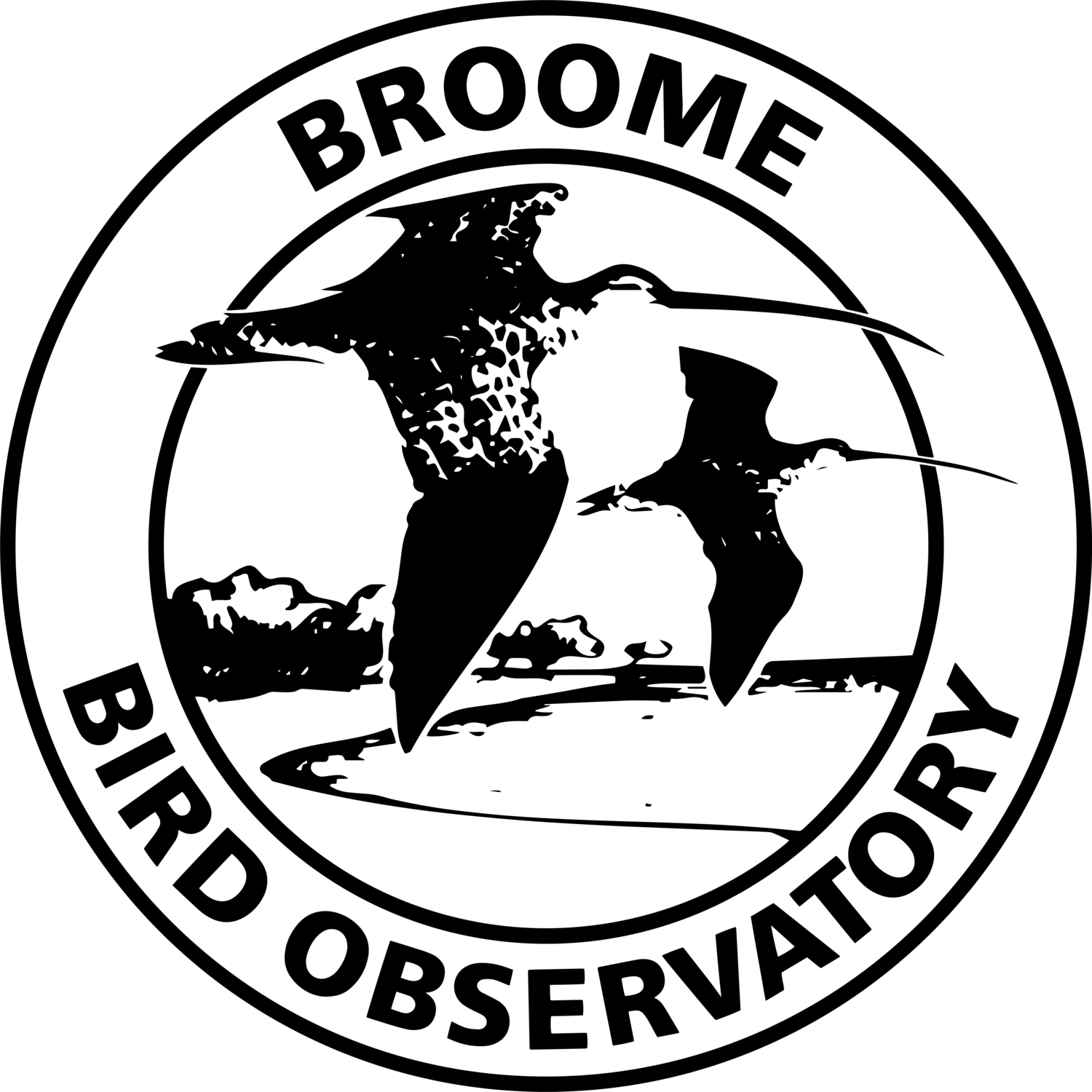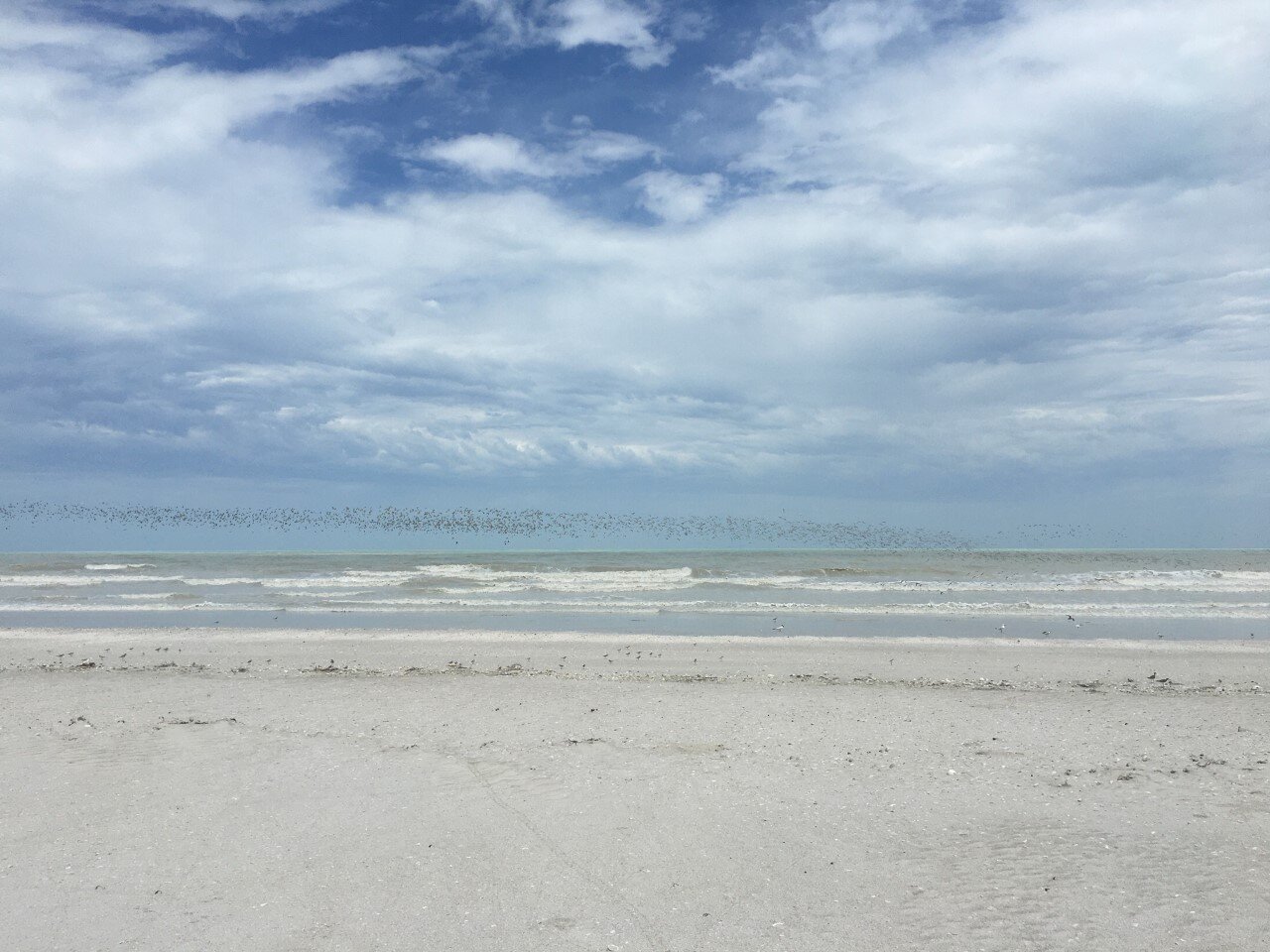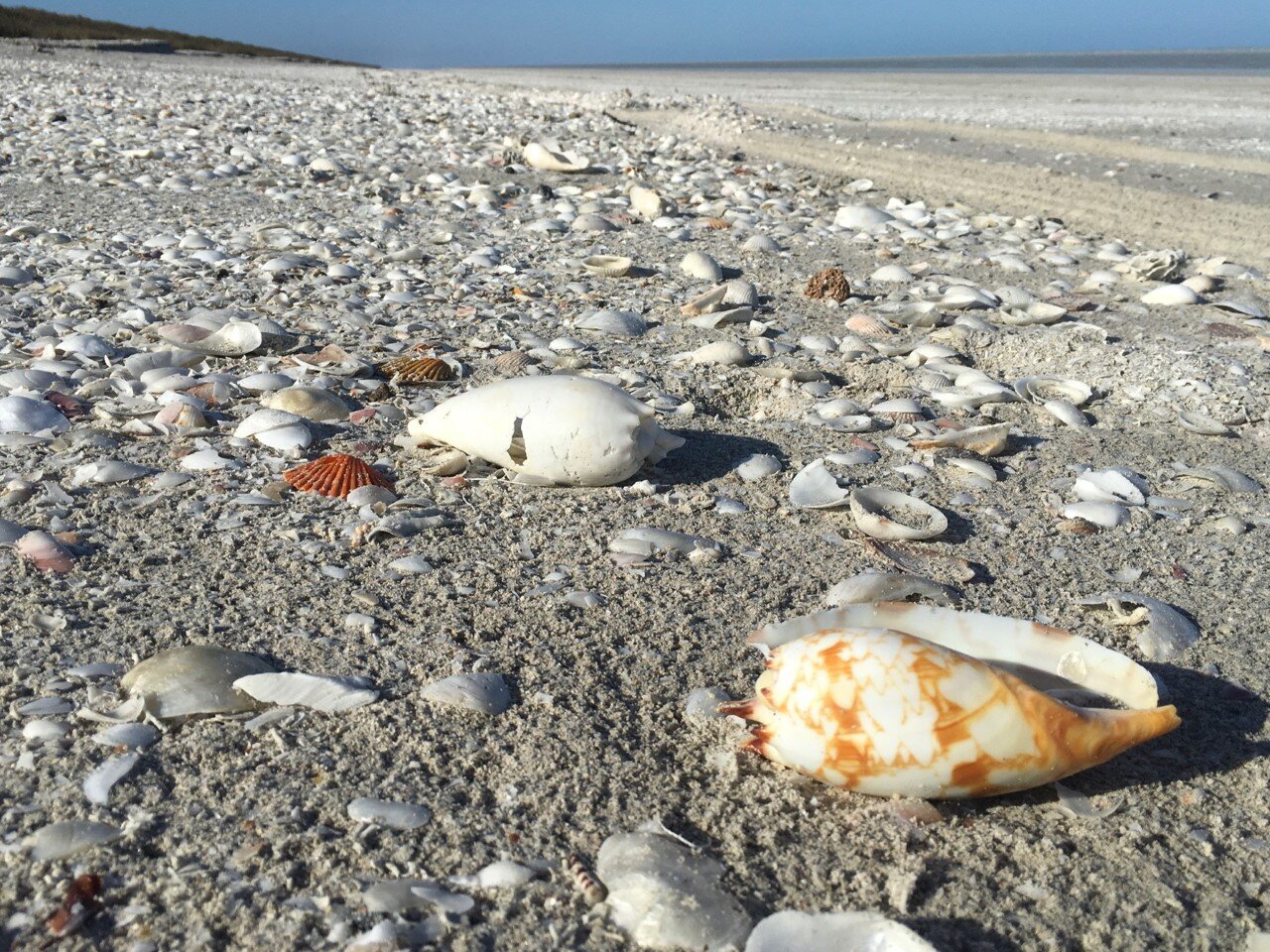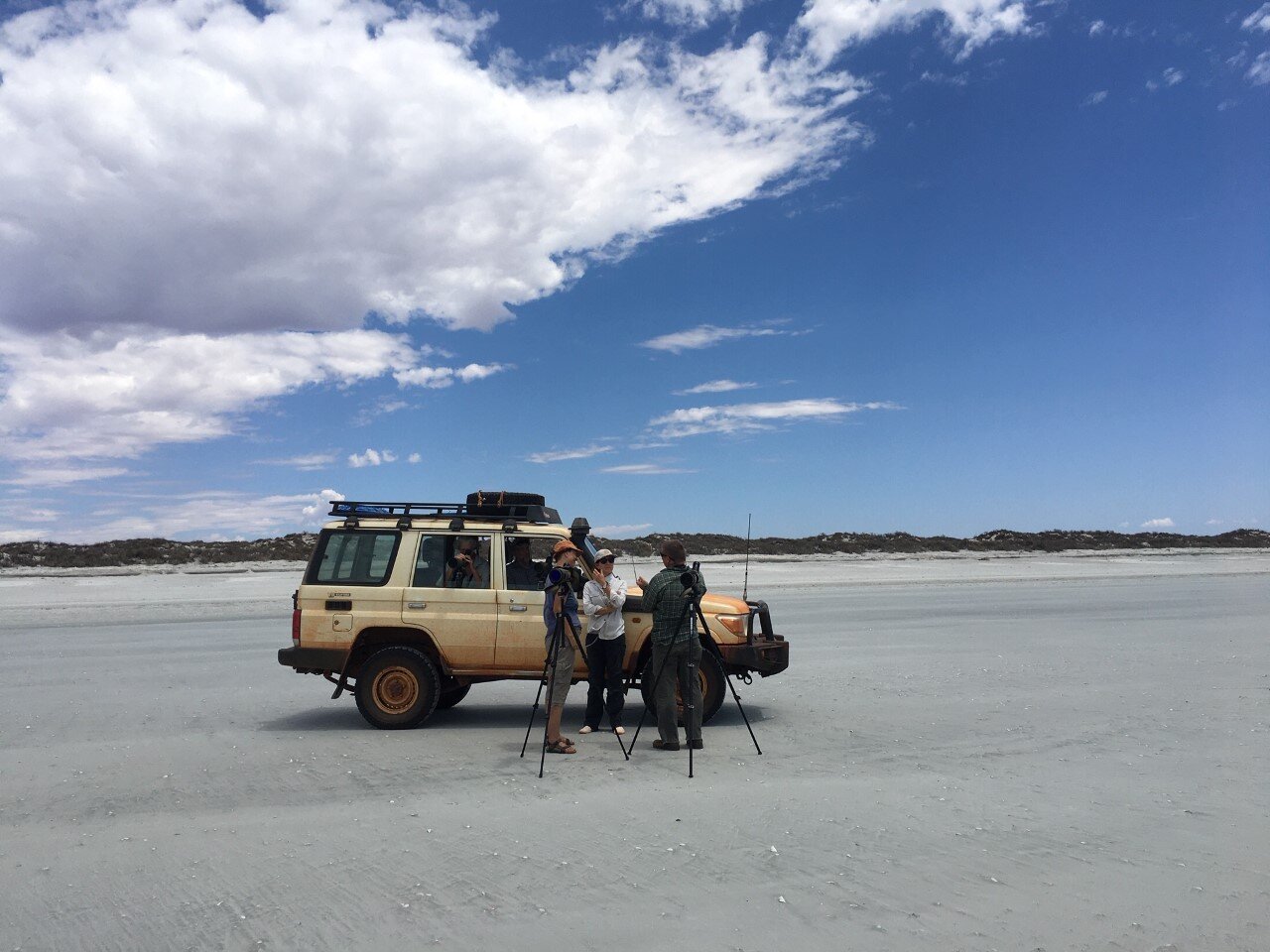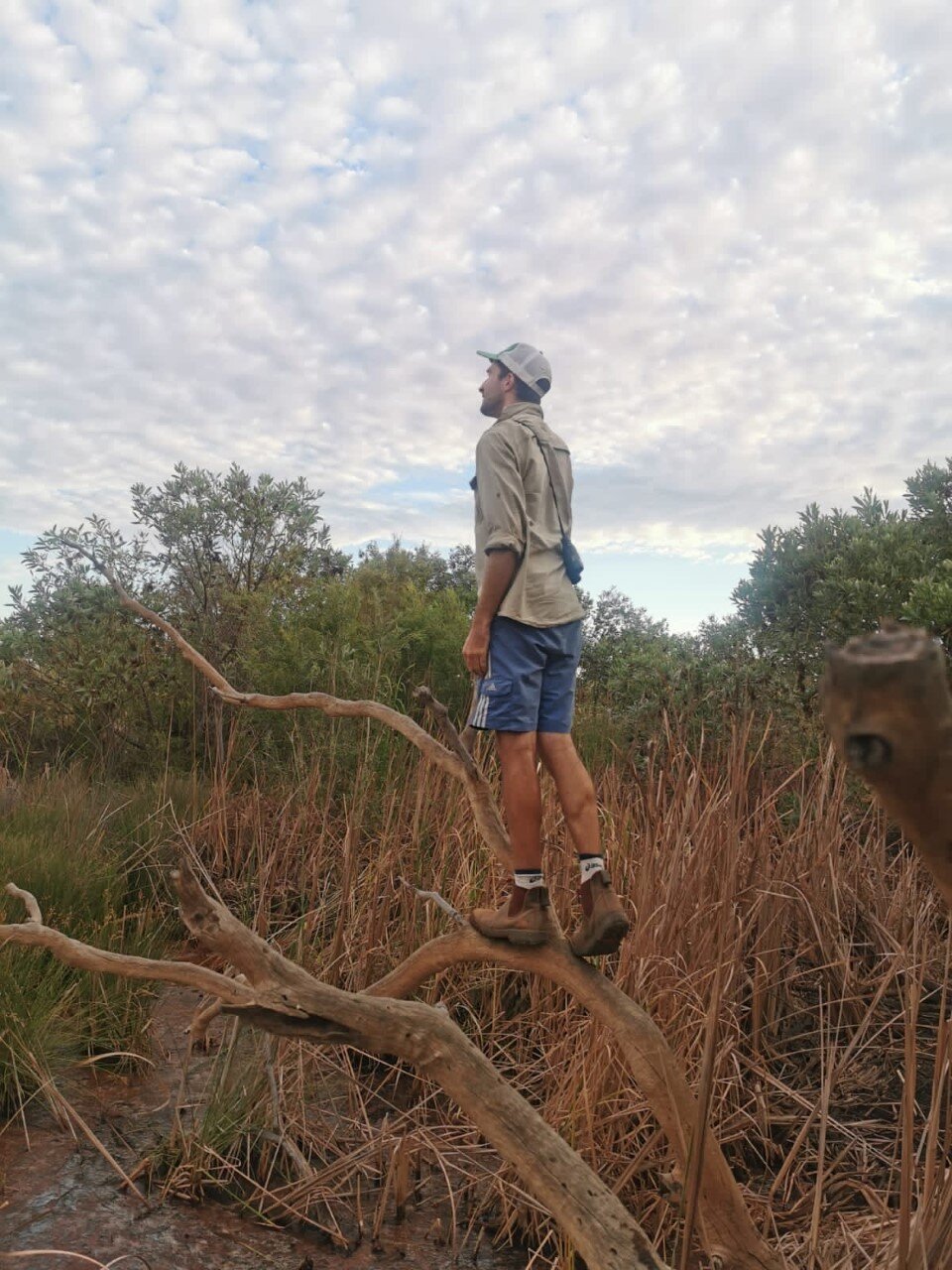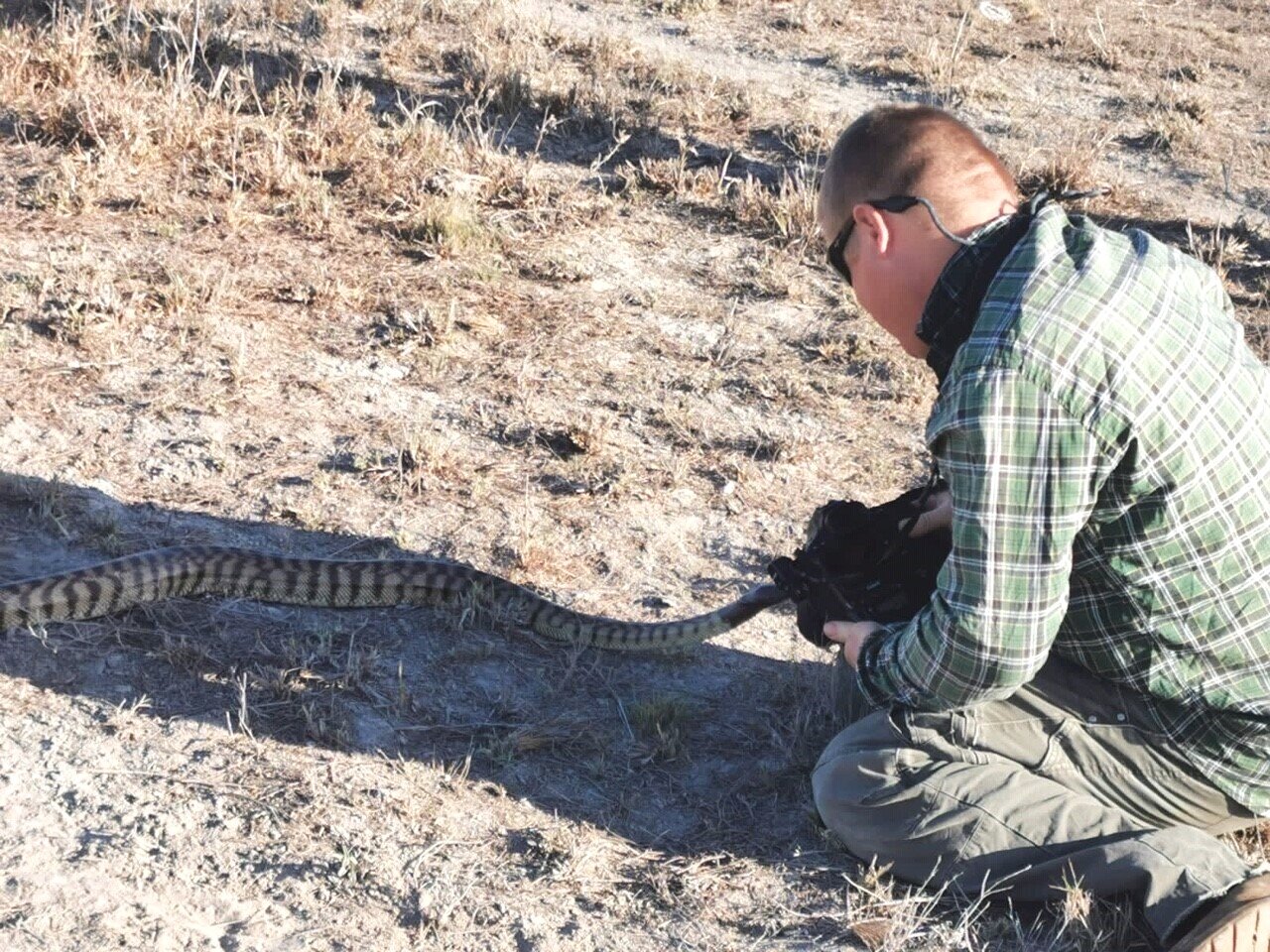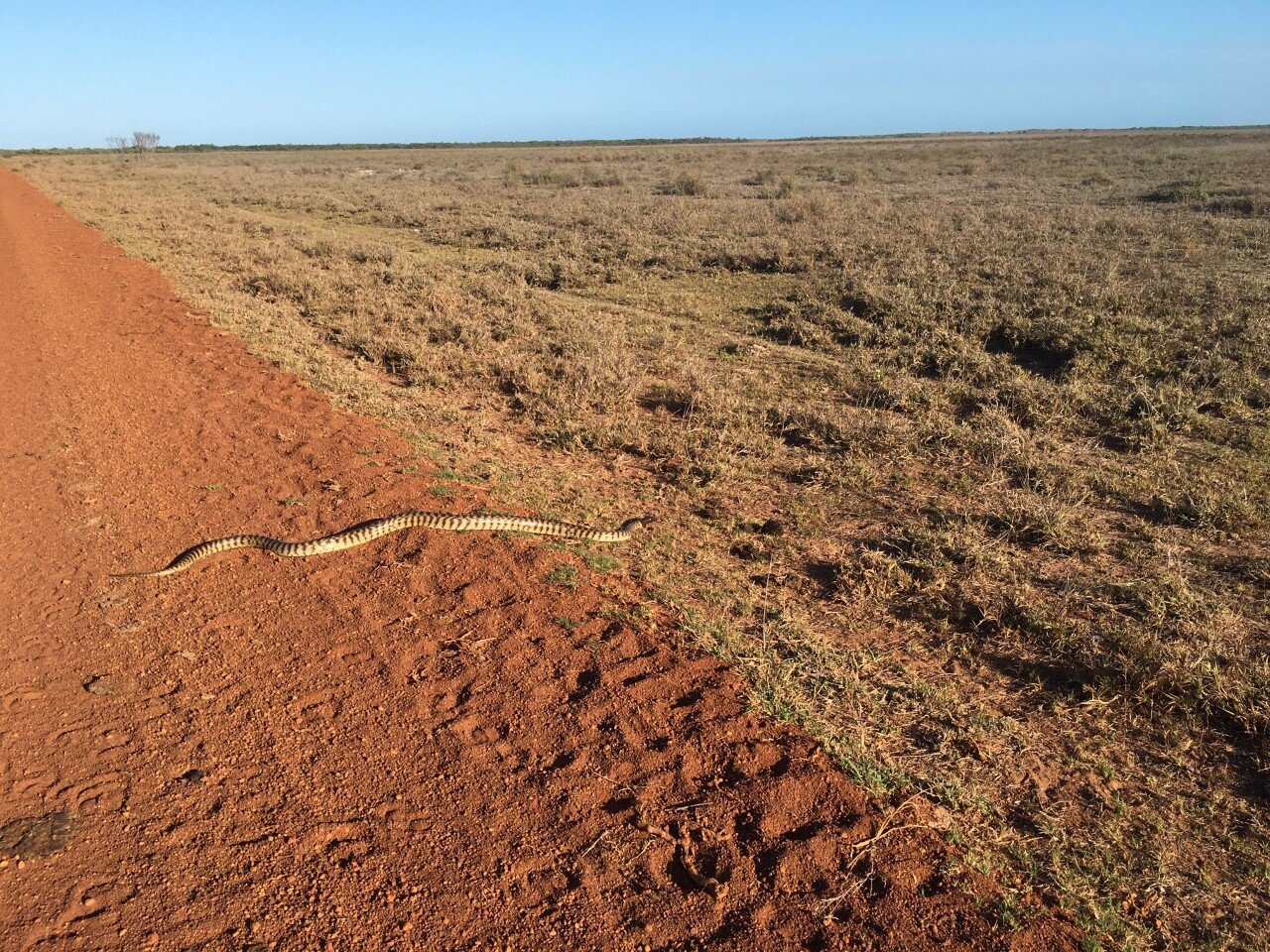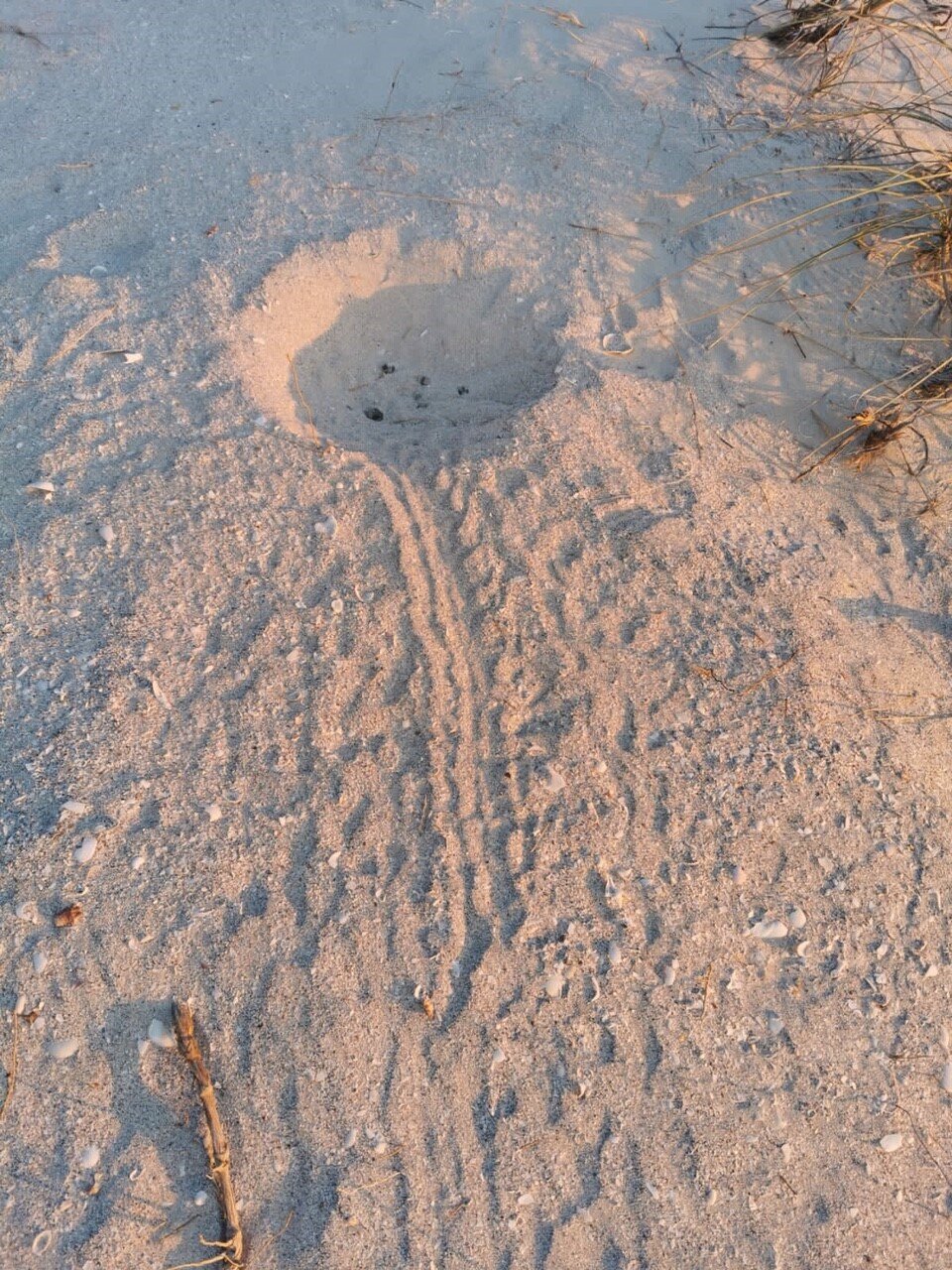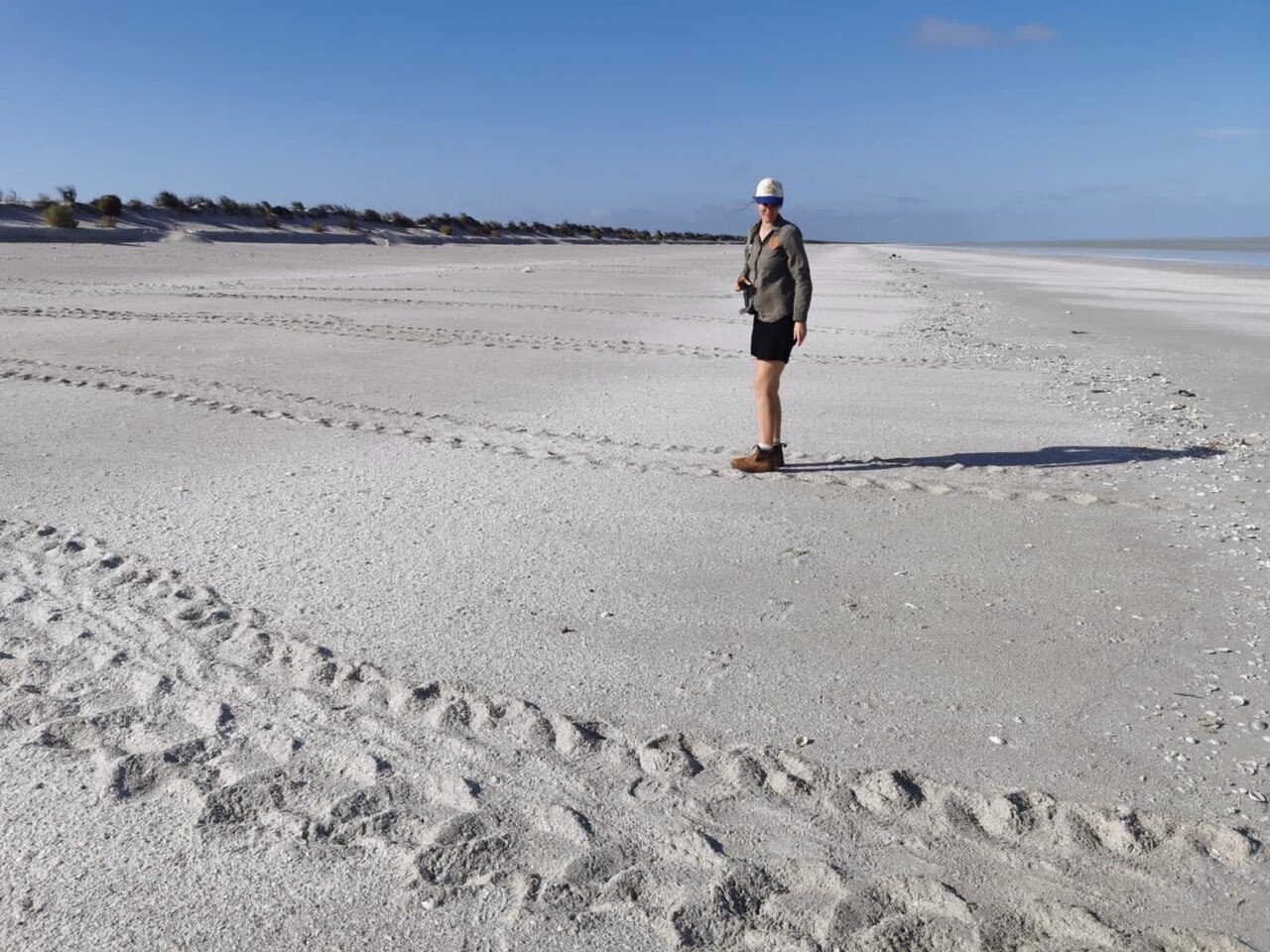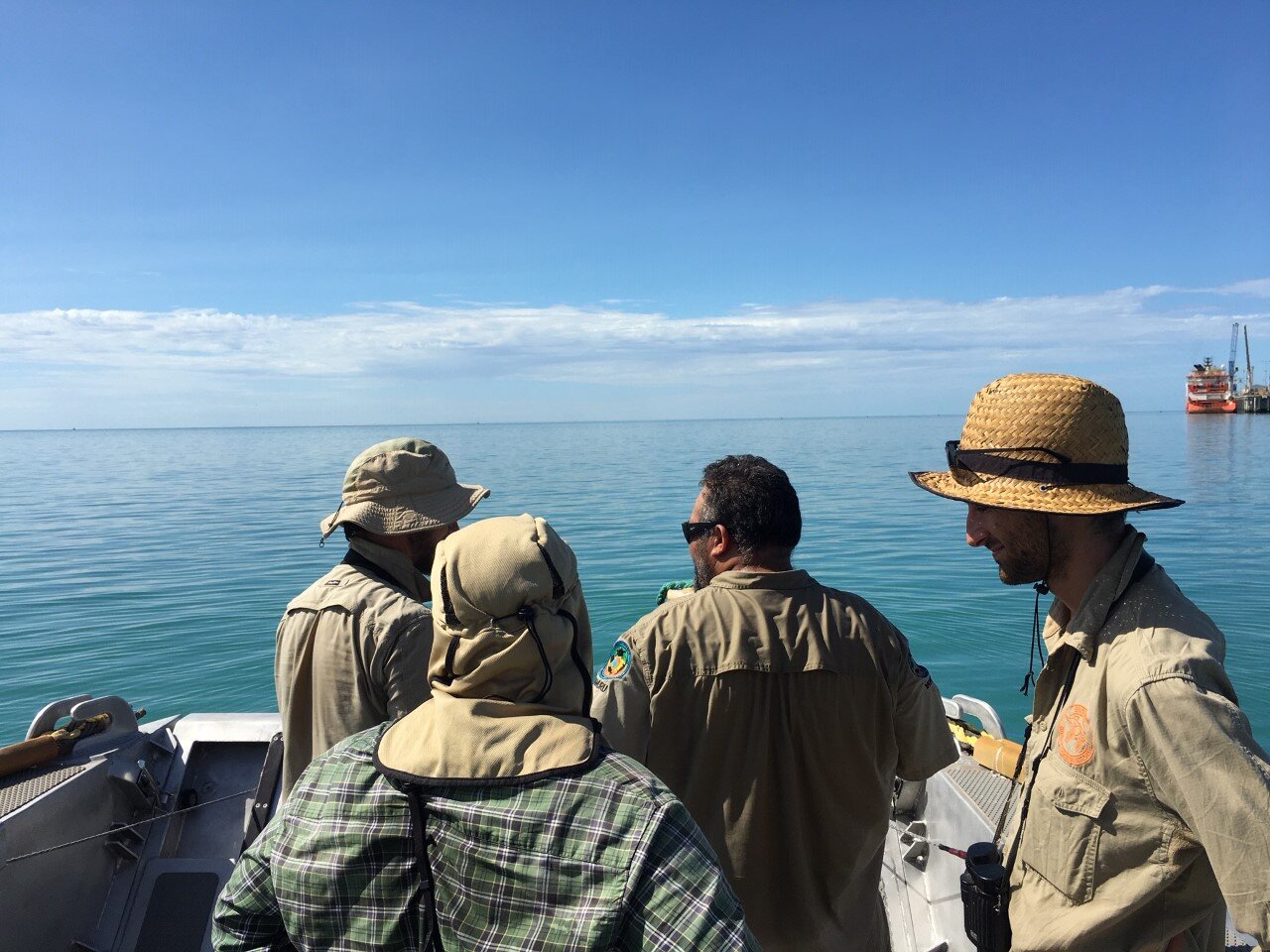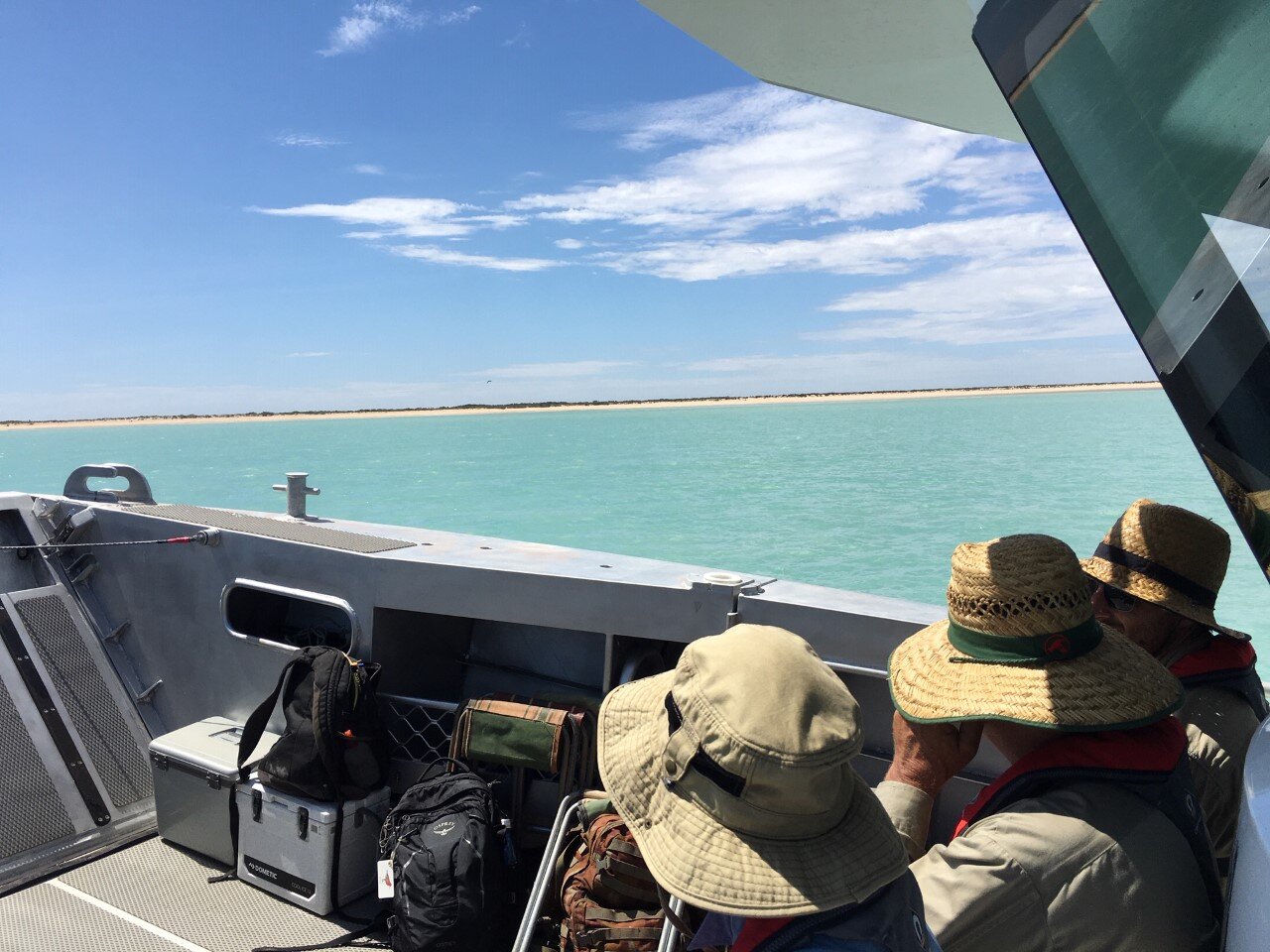An Annual Outing and some Absolute Megas
One of the final and most anticipated events for the wardens at the BBO each season is the annual summer counts as a part of the Monitoring Yellow Sea Migrants in Australia (MYSMA) project. The aim of these counts is to establish the numbers of shorebirds along the north-west Australian coastline, covering a large proportion of Eighty Mile Beach, the rarely-accessed Bush Point and right up to the northern shores of Roebuck Bay. This will provide a snapshot of the number of shorebirds using the crucial north west Australian roosting sites and proportion of species represented.
It’s a big operation and while usually there are researchers and counters flown in from across the country, this year with border restrictions the project relied on local talent. Here in Broome we’re fortunate to have a community of willing volunteers and shorebird experts. So, while there are many people behind the scenes working hard to organise access, handle administrative side of things, printing out data sheets, arranging equipment, let’s focus on the fun, field side of things!
First day we met to pack up the vehicles. Chock full with tents, Engel fridges, eskys, scopes, water containers, swags and everything else to sustain ten shorebird counters for three nights off grid we headed on the road south to Anna Plains. Anna Plains station backs onto the expansive Eighty-Mile Beach, a Ramsar site supporting the greatest numbers of non-breeding shorebirds in Australia and the East-Asian Australasian Flyway. Naturally on the drive we had to check every communication tower on the chance a Grey Falcon may be perched atop it. Failing to find a Falcon, the communication tower highlights included a couple of old nests and at one point a crow.
Much longer than 80 miles, 80-Mile Beach is a vital Ramsar site for shorebirds in the EAAF
Usually we camp at Anna Plains station, which in early December means overnight lows of 29 degrees and bore water. However we were absolutely delighted to find that this year we were in the Calf Shed. More salubrious than your standard ‘Calf Shed’ we had freezers, an indoor shower and toilet and an absolute luxury: icy cold air-con. On arrival we sorted our gear and prepared for the days of counting ahead.
An important part of 80-Mile Beach is the creation of obvious markers to signpost to each team where one section begins and the other ends. Luckily on 80 Mile there are plenty of sponges, corals and shells washed up along the shore.
This particularly inspired marker was designed and executed by team Maurice, George and Nyil.
We are aiming to count the majority of the half-a million shorebirds that call Eighty-Mile Beach and Roebuck Bay their summer homes. We’re often asked: how do you count the birds? Well, there’s no real trick to it. We work through a flock, two counters in each group are responsible for a particular species and work their way through the birds, giving their count to their dedicated scribe. One flock can easily contain 30,000 birds and while counting at high tide ensures the best views and accuracy as possible, time is usually against us. Again, there is no trick other than counting fast, this usually means block counting the species in tens or hundreds, depending on the size. A counters worst nightmare? Almost completing a flock and the birds take off, merge with another flock and there’s no choice but for a recount.
It can be a very frustrating process and some times an estimate simply has to do. Abating the frustration (or accelerating it depending on your whereabouts on the 80km stretch of beach the three teams cover) is when a rare bird is found. While working our way through a large flock, George Swann, on another counting team some kilometres away, was on the radio requesting to speak to Adrian. Slightly annoyed at his interruption to our count, Adrian got on the radio. George, Nyil and Maurice had spotted a Buff-breasted Sandpiper on their section of beach. An American bird, this was the second record of this species in WA. Absolutely gripped, we still had thousands of birds to count before we could drive back to look for the bird.
Terrific views of the second Buff-breasted Sandpiper to be recorded in WA (photo: Nyil Khwaja)
The thought of seeing a Buff-breasted Sandpiper plagued us through the flocks we had left to count. Now birders are generous and kind people, but when someone has seen a rare bird in a location where it’s never been recorded before that you need for your list, one cannot help but be miffed.
However, never one to be outdone, it was our team to have the next unprecedented windfall of the trip, not longer after George’s radio call came through.
Adrian Boyle has a freakish ability to conjure the rare and endangered Nordmann’s Greenshank on command. An Asian bird, the Nordmann’s Greenshank has been recorded in Australia seven times, with Adrian being responsible for finding the bird 6 out of those 7. Another incredible record to have onboard! Adrian ~humbly~ called George, Nyil and Maurice to share the rarity we were watching at that moment through our ‘scopes. Now both teams were eager to finish to see one another’s respective rare birds - both being lifers (a bird you’ve never seen before) for most of us on the trip.
The Nordmann’s Greenshank (centre bird) can be distinguished from Common Greenshank (to its left) with its shorter legs and two-toned steeply upturned bill (photo: Jane Taylor)
After all teams hastily (but, no doubt, accurately…) completed their section of beach we bombed our way towards the Buff-breasted Sandpiper and Nordmann’s. Luckily, all of us managed incredible views of the Buff-breasted Sandpiper as it walked on the edge of the flock, happily treading on cool, wet sand, presumably confused how it overshot South America and made its way onto an entirely different continent. Living up to its notorious reputation, the Nordmann’s was impossible to re-find but the ‘Buffy’ was a more than fair consolation prize. Nigel, after missing the first day due to his cricket grand final, did the responsible thing and upon hearing the news drove the three-hours the next morning to twitch the Buffy and the Nordmann’s. Breaking the curse, Nigel did manage to re-find the Nordmann’s and now everyone on the trip had to chance at excellent views.
Each afternoon after a hearty lunch and a nap the group would head off birding around the station. Spotless Crake were heard calling from the bore, Australian Bustards lurked in the crop and some Pratincole hung around the sprinklers. One morning we pulled over as a 2-metre Black-headed Python slithered across the road. In beautiful condition, it was particularly enamored with Ady’s camera lens, making its way right up to him and spending moments assessing its reflection. As it’s December we saw hundreds of tracks from female turtles, heaving their bulk up the beach at night to lay and return to the ocean. The only evidence of them was fresh tracks each morning and the couple of hatchlings we were lucky to spot and hoped would make the perilous journey into adulthood.
After Anna Plains we counted the northern shores of Roebuck Bay. A lot closer to home (the BBO sitting right in the bush tucked behind the shore) we had a much more straightforward count. Approximately 15,000 Oriental Pratincole swept overhead at the beginning of the count, marking that the Wet season is well and truly here. Kerry and Chris dealt with 20,000 shorebirds on the one beach, with a Brahminy Kite causing constant headaches for them (remember what I said about birds taking off and recounting? Yep). Nice features of the day were a Beach Stone Curlew and Common Redshank counted in the bay.
Filling in the data sheets
Bit hard to make out in this photo but there are a few thousand Oriental Pratincole wheeling overhead
The view over One Tree, we station here first to try and count any birds that are heading inland to roost
Bush Point is essentially inaccessible and rarely visited so a recipe for terrific numbers of shorebirds. MYSMA only visits Bush Point twice a year for winter and summer counts. Although only about 25km from Broome as the crow flies it takes an hour and a half driving across mangrove flats which can only be navigated on low tide. The twisted mangrove forests and intertidal flats encircling Bush Point from the BBO give way to a pristine white beach. As we’d had rain, driving was not an option and DBCA took us onboard Jurrwayi, their snazzy new vessel.
Waiting for the boat at Entrance Point, Broome
After 45 blissful minutes onboard we arrived at Bush Point where we began the long slog through the white sand to our sections. Bush Point is such a different environment from Roebuck Bay and there is also a different make-up of shorebird species. When the tides are unusually high or disturbance becomes too great, the shorebirds around the BBO fly over to Bush Point to seek refuge at high tide. It is a privilege to step foot there.
Very different to the section of Roebuck Bay that BBO sits on, our red dirt is swapped for white sand and pindan for low dunes.
A lot of sand and sky
And you wouldn’t guess it by my goodness, with thousands of shorebirds, blinding glare and high humidity who goes and spots ANOTHER Nordmann’s Greenshank? Adrian Boyle of course. As was declared over the radio by Nigel, Ady is indeed a freak. This is the first time a Nordmann’s (again, a very rare and endangered Asian bird) has been recorded at Bush Point. Needless to say no one could face the trudge to look at it so we looking at Nigel’s photos was good enough for us.
Back onboard Parks and Wildlife’s fancy new boat
Count over by midday and with the boat needing to head out on the tide we jumped back onboard the Jurrwayi and returned to Broome. Chips and oranges to revive us, we had completed our yearly count, exhausted, fulfilled and still shaking our heads in disbelief.
